No, not some crazy remake of an Eighties soap featuring various members of the Bach family (though I wouldn’t put it past certain channel programmers to come up with the idea), but the Academy of Ancient Music’s (AAM) new series of concerts, which in a nutshell gives them the chance to perform lots of Johann Sebastian, with two bookend concerts covering the befores and the afters, as it were. Bound to get the crowds in and looks nice on the posters.
Last night’s concert focused on Bach’s ancestors: specifically great uncle Heinrich, and his two sons Johann Michael and Johann Christoph (no shortage of Johanns in the Bach family even then). Heinrich, who was a town musician in Schweinfurt and Erfurt before moving down the road to become organist of Arnstadt, was represented by his only surviving vocal work, Ich danke dir, Gott, and two feisty instrumental sonatas. Far from showing his provincial roots, Heinrich writes in a strikingly vibrant Venetian style, not a million miles away from bits of Monteverdi in its jauntily rambling manner. The two sonatas fizzed under the AAM strings, the first like an overactive child – all different directions and four moods a minute – while the second was a more pastoral affair, though not without the odd jazzy moment.
Johann Michael had only one piece played: a Gospel dramatisation for the second Sunday in Lent - Liebster Jesu, hör mein Flehen. A mini-cantata of sorts, it told the story of the Canaanite women’s prayer to Jesus and his, and his disciples’, responses. The lion’s share of works went to Johann Christoph, highly regarded by Johann Sebastian, and a popular composer and performer in Eisenach. The cantata Die Furcht des Herren was written for the election of the Arnstadt town council. Different voices represent different members of the council, with the role of the clerk taken by the organ, not that it did a great deal. The instrumental introduction was beautiful, with a lovely wandering first viola line, before a Zadok-esque second section upped the tension a little. His lament, Ach, dass ich Wassers gnug hätte for solo alto also demonstrated considerable compositional skill: the violins captured perfectly the lapping motion underneath "Wasser", and the harmonies were intense and tightly wound.
To finish, a wedding cantata, Mein Freundin, du bist schön, that appears to have been a bit of a Bach family favourite: it may have been played at Johann Sebastian’s wedding to Maria Barbara. The text is from the Song of Songs and Johann Christoph has no qualms about producing some fairly raunchy music, particularly the fabulous, sultry chaconne in the middle, a dialogue between soprano solo and violin that goes on forever and conjures up all sorts of images that probably aren’t suitable for church. I like to imagine the Bach boys getting together and launching into this after a few beers: old Johann Christoph seeing what he can get away with on the keyboard and perhaps a newly married Johann Sebastian hammering away on the fiddle.
It was stirring music, for the most part, and the AAM added plenty of spice to it. Yes, there were the odd issues: first and foremost the balance wasn’t always right – some soloists struggled to be heard over the band – and there were moments of waywardness among the singers in some movements. But it had plenty of flair in all the right places. Director and harpsichordist Richard Egarr and leader Pavlo Beznosiuk are a great pair for making you relax. It feels like they’ve got it all under control, and there’s an easiness and solidity to the sound which is very satisfying. Egarr had plenty of fun at the keyboard, keeping – just, on occasions – within the boundaries of taste, and getting a luscious sound from his harpsichord.
The singers, when the balance worked, were also on good form – Egarr used a number of young voices which varied a little in quality but worked well together and offered a refreshing variety of sound. Richard Latham was a fine bass, with a lovely tone and getting delightfully into the part of the lover in Mein Freundin. Also standing out was soprano Charmian Bedford, who sang the oddity of the programme, an anonymous setting of Es ist g’nug, with a splendidly oaky voice, despite the setting itself being complete nonsense. When singers and players came together we got rich, warm, solid building blocks that still allowed plenty of space for wit, interest and inspiration from all the musicians.
- Book tickets for the next Bach Dynasty concert, the Brandenburg Concertos at Cadogan Hall, on 19 October
- The next Academy of Ancient Music Wigmore Hall concert is South American Connections on 25 November
- Visit the Academy of Ancient Music website for full details of their 2010-2011 season



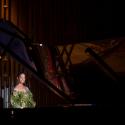
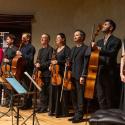
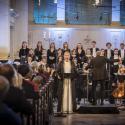


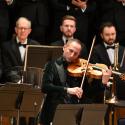
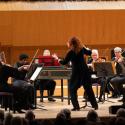





Add comment